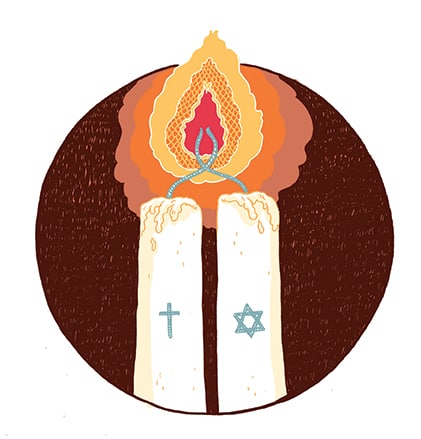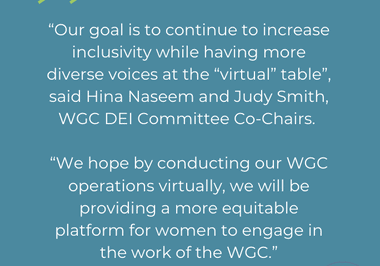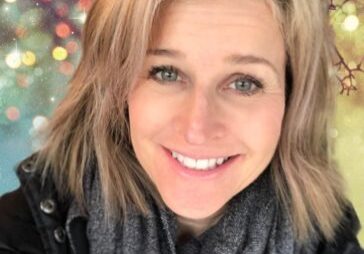IN INTERFAITH HOUSEHOLDS, CELEBRATIONS KNOW NO BOUNDARIES
STORY BY Heather Kirk-Davidoff ILLUSTRATION BY Kelly Miller
NOVEMBER/DECEMBER 2015
There are a lot of candles in our house during December. We light the fir
When Dan and I got married 22 years ago, we thought we had a plan. “My contribution to our religious life will be skepticism,” my scientist husband announced early on. But by the time we had kids, that didn’t seem like enough. Dan wanted to make a positive contribution to our children’s religious life. He stumbled on an exceptionally welcoming Jewish community a few blocks from where we were living and for the first time in his life began to regularly participate in worship. When our twins arrived, the community held a special blessing ceremony, wrapping all four of us in a prayer shawl. It was a moment of such deep welcome that remembering it still brings tears to my eyes.
Our goal from that point on was to raise our children with a deep appreciation of both of their religious heritages, while also understanding that Christianity and Judaism are different religions with a different history, rituals and beliefs. The fact that the communities worshiped on different days and in different buildings seem to make this quite clear to everyone.
But what should we do about our family’s religious life in our home? The storybooks got mixed together, the holidays often occurred simultaneously. It was hard to keep the boundaries clear, to us or to our children.
So we gave up trying. Instead of emphasizing differences and distinctions, we began to notice the connections between our two religious traditions. Since both Christianity and Judaism teach the importance of a weekly Sabbath, we decided a few years back to fully observe the Jewish Sabbath during Lent, the six-week period that precedes Easter in the Christian tradition.
We had long enjoyed a special Friday night Sabbath dinner with candles, wine and blessings, but that year we decided to refrain from all work from sundown on Friday until sundown on Saturday. Not only would Dan and I not do any work related to our jobs, also the kids would not be required to do chores. We wouldn’t drive anywhere and we wouldn’t buy anything. We wouldn’t turn on our computers or our television.
Our kids took our unorthodox orthodoxy in stride. They got rides from friends and were more than happy to procrastinate on their chores and their homework. I found it much harder to maintain our Sabbath practice and continually battled my desire to check my email or get a few errands out of the way. I fidgeted and tried to think of something productive to do that wouldn’t really “count” as work. But eventually, I settled down and began to appreciate the rhythm of a week that begins and ends with Sabbath. This traditional Jewish practice brought a sense of holiness to the weeks that helped me prepare for the Christian celebration of Easter. Go figure.
On Easter Sunday this year, we got a call from our son Paul, who was in the midst of his freshman year in college. “I had a long night,” he told us breathlessly. He had enjoyed a student-led Passover Seder that lasted late into the night, followed by a very early sunrise Easter service. “The good thing was I could wear the same clothes to both events,” he added.
The only other person who also attended both celebrations, Paul added, was the Protestant chaplain of his college. Years ago I would have found that surprising — back then, I assumed that respect for other religions meant we didn’t intrude on their worship. But my experience with my family has changed my mind. There are enough battles over boundaries in this world already. What we really need, it seems to me, are ways to join one another in celebration. Each blessing leads to the next one. *




